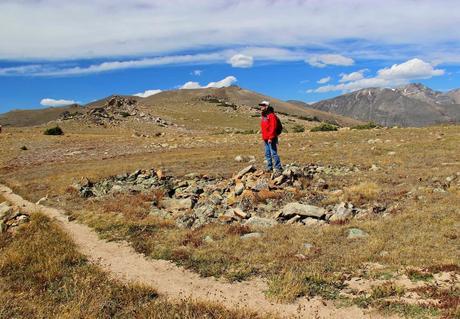
Ypsilon Mountain above blue hat, part of the Mummy Range in northern Colorado.
Abbott and Cook say “Ice is Earth’s master sculptor, and in Colorado, Rocky Mountain National Park is its magnum opus.” I think they’re right. When we recently joined hundreds of other week-end pilgrims to drive Trail Ridge Road, we passed glacial feature after glacial feature: u-shaped drainages, moraines, cirques, arêtes, horns and roches moutennées galore. We didn’t have much time and parking was limited, but I managed to get a few shots. Ypsilon Mountain, where the Master Sculptor’s medium was banded Precambrian rocks, especially caught my fancy.Below is the east side of Ypsilon Mountain, with a beautiful cirque carved into biotite schist and gneiss. The alternating layers contain more or less biotite (Geological Resource Evaluation Report for RMNP).



The labeled photos and illustrations were helpful.
At the Alpine Visitor Center, we walked to the top of the hill where we caught a glimpse of the “backside” of Ypsilon, frosted with snow.

Frost-heave with hiker on top for scale. The Ypsilon cirque is on the far right (note banded rocks).
Where on Google Earth (click on image to view):
